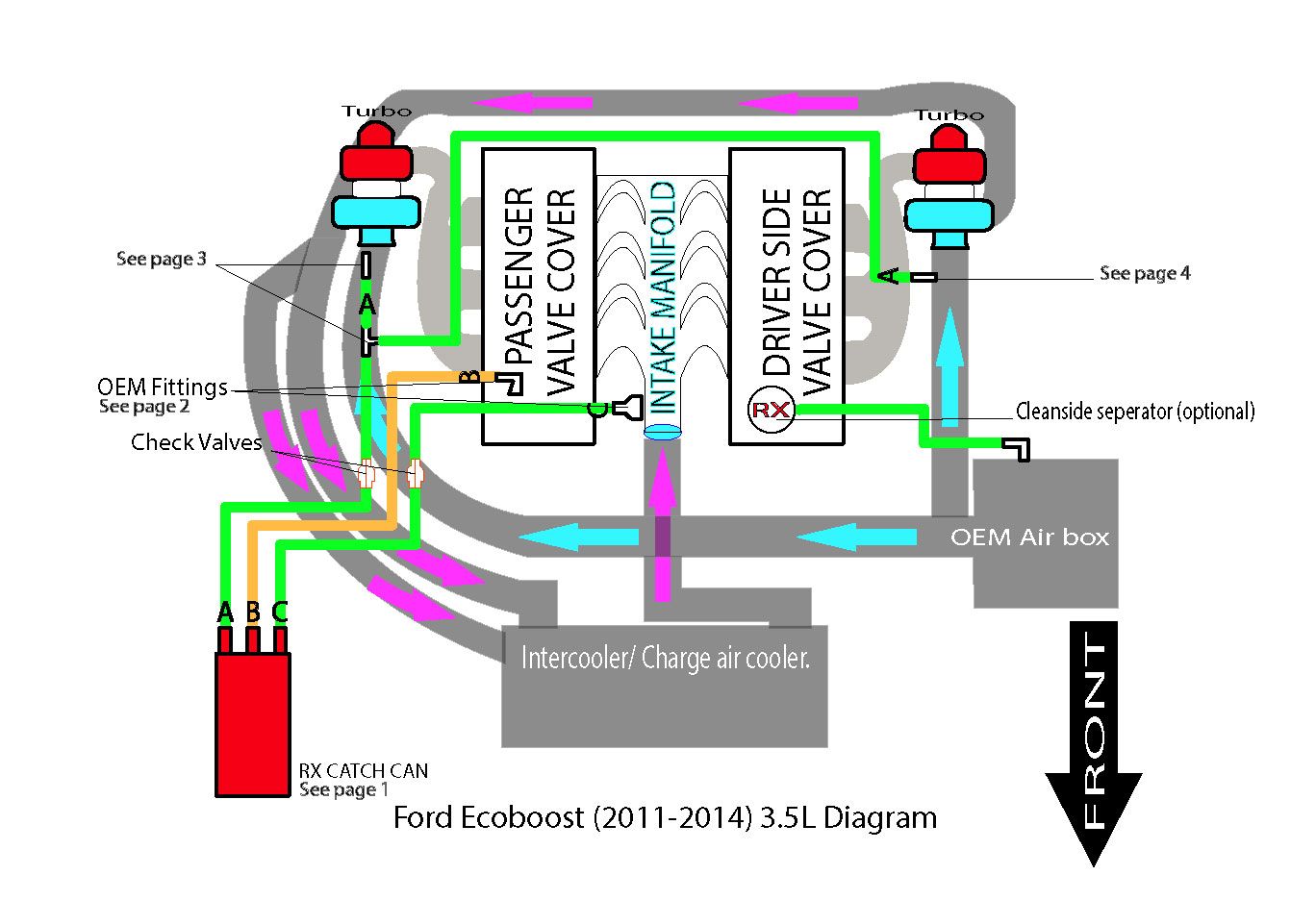Agentlongwood
New member
I recently looked at a diagram (See below) for one of the catch cans and immediately thought "Wow I need some education on this. Half these lines seem unnecessary to me." I figure there has to be a reason for the extra lines so here I am. As I understand it the factory system is just 1 line from the valve cover to the intake manifold. As I understand it the point of a catch can is to reduce "gunk" recirculating into the motor via that port in the intake manifold. If that's all it is, why not just insert the catch can along that single line and be done with it? That would solve the problem of gunk getting into the intake manifold, and thus intake valves.
If that is the case, then what is the purpose of adding the lines from the turbos? and the clean side separator? In all fairness the diagram lists the CSS as "optional" though it does not mark "Line A" as optional. If the factory system doesn't need Line A then what function does it serve? I can't imagine it keeps more gunk out of the intake manifold... But I admit it's something I don't fully understand, so I came here to learn up on the details.

If that is the case, then what is the purpose of adding the lines from the turbos? and the clean side separator? In all fairness the diagram lists the CSS as "optional" though it does not mark "Line A" as optional. If the factory system doesn't need Line A then what function does it serve? I can't imagine it keeps more gunk out of the intake manifold... But I admit it's something I don't fully understand, so I came here to learn up on the details.
